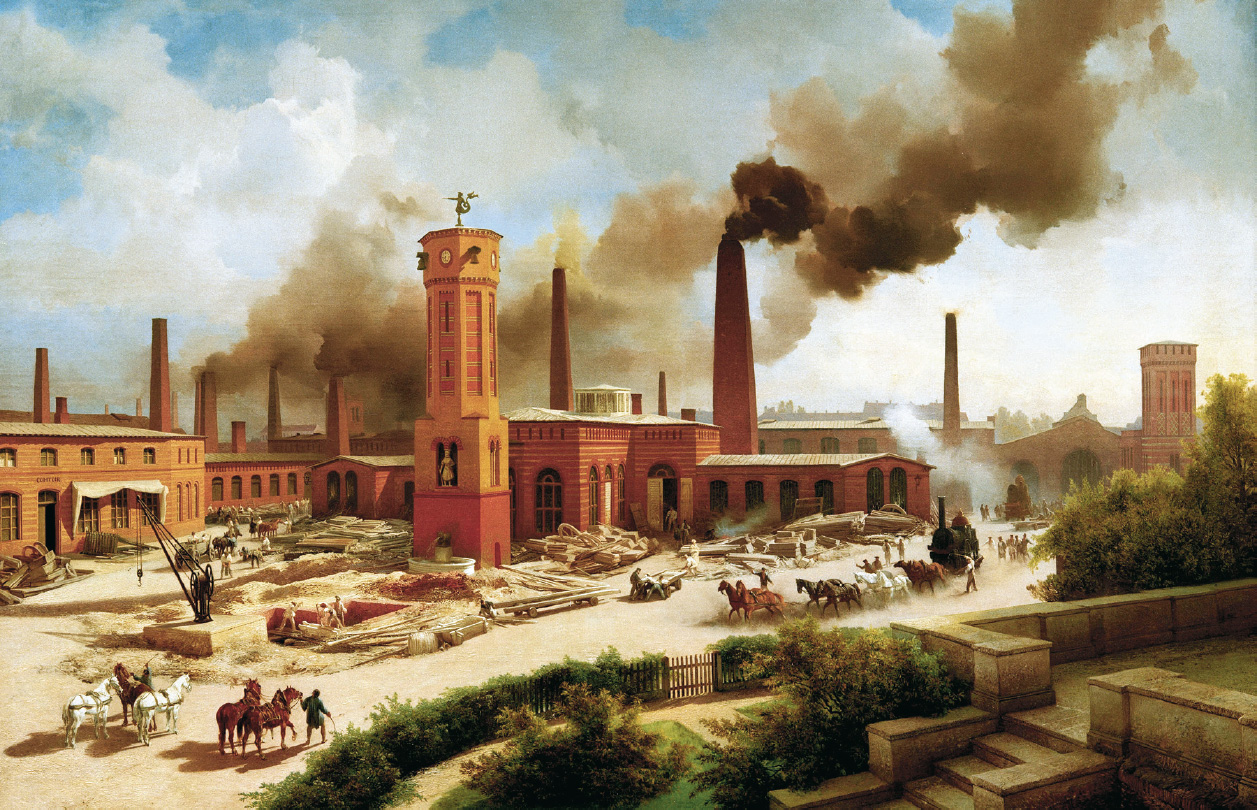Government Support and Corporate Banking
Just as the British government provided crucial support for the growth of industrialization, so did national governments in other parts of Europe. After 1815 western European states adopted a set of largely successful policies similar to those in Britain. Tariff protection was one such support. The French, for example, responded to a flood of cheap British goods in 1815 after the Napoleonic Wars by laying high tariffs on imported goods.
After 1815 continental governments also bore the cost of building roads, canals, and railroads to improve transportation. Belgium led the way in the 1830s and 1840s. Built rapidly as a unified network, Belgium’s state-owned railroads stimulated the development of heavy industry and made the country an early industrial leader. The Prussian government provided another kind of invaluable support for railroads. It guaranteed that the state treasury would pay the interest and principal on railroad bonds if the closely regulated private companies in Prussia were unable to do so. In France, the state shouldered all the expense of acquiring and laying roadbed, including bridges and tunnels. In short, governments helped pay for railroads, the all-important leading sector in continental industrialization.
German journalist and thinker Friedrich List (1789–1846) was a strong proponent of government support for industrialization. In the 1820s and 1830s List spent several years in the United States, where he observed the country’s rapidly developing economy with great interest. He returned with the conviction that the growth of modern industry was of the utmost importance. For List, manufacturing was a primary means of increasing people’s well-being and relieving their poverty. Moreover, he believed industrialization was essential to prevent the German states from falling behind the rest of the world. He wrote that the “wider the gap between the backward and advanced nations becomes, the more dangerous it is to remain behind.”

The practical policies that List focused on were railroad building and the tariff. An early proponent of unifying the German lands, List supported the formation of a customs union, or Zollverein (TSOL-feh-rign), among the separate states. Such a tariff union came into being in 1818 and had spread to most of the German states by 1834, allowing goods to move between member states without tariffs, while erecting a single uniform tariff against other nations. List wanted a high protective tariff, which would encourage infant industries, allowing them to develop and eventually hold their own against their more advanced British counterparts.
Finally, banks also played an important role in supporting development on the continent, more so than in Britain. Previously, almost all banks in Europe had been private. Because of the possibility of unlimited financial loss, the partners of private banks tended to be conservative and were content to deal with a few rich clients and a few big merchants. They generally avoided industrial investment as being too risky.
In the 1830s two important Belgian banks pioneered in a new direction. They received permission from the growth-oriented government to establish themselves as corporations enjoying limited liability. That is, if the bank went bankrupt, stockholders could now lose only their original investments in the bank’s common stock, and they could not be forced by the courts to pay for any additional losses out of other property they owned. Limited liability helped these Belgian banks attract investors. They mobilized impressive resources for investment in big companies, became industrial banks, and successfully promoted industrial development.
Similar corporate banks became important in France and the German lands in the 1850s and 1860s. Usually working in collaboration with governments, corporate banks established and developed many railroads and many companies working in heavy industry, which were also increasingly organized as limited liability corporations.
The combined efforts of governments, skilled workers, entrepreneurs, and industrial banks meshed successfully after 1850. In Belgium, France, and the German states, key indicators of modern industrial development — such as railway mileage, iron and coal production, and steam-engine capacity — increased at average annual rates of 5 to 10 percent. As a result, rail networks were completed in western and much of central Europe, and the leading continental countries mastered the industrial technologies that had first been developed by the British. In the early 1870s Britain was still Europe’s most industrial nation, but a select handful of nations had closed the gap. Western European countries — along with the United States — thus became technological innovators in their own right and enjoyed sustained economic growth that made them the wealthiest nations in the world.